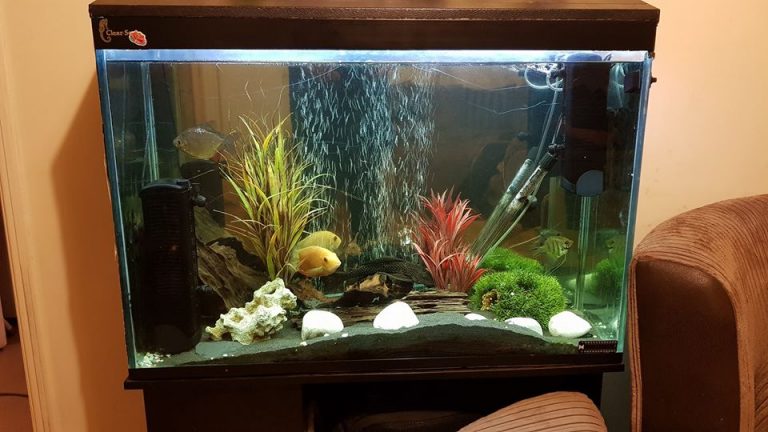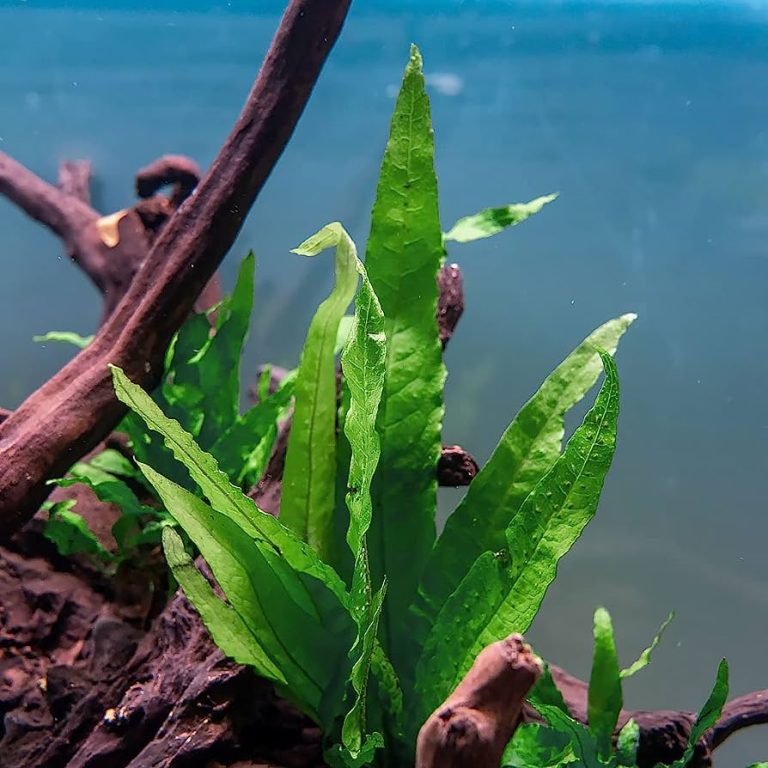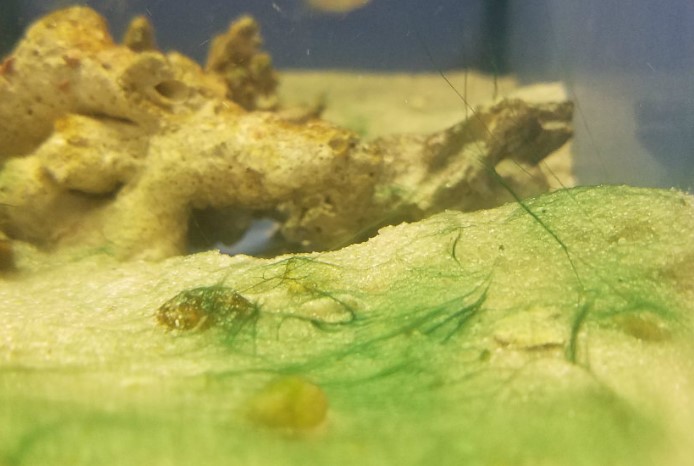Shell Shocked: The Truth About Putting Seashells in a Fish Tank
Yes, you can put seashells in a fish tank. However, it’s important to consider whether the seashells are safe for your fish and the overall ecosystem of the tank.
Some seashells may contain harmful chemicals or sharp edges that can harm your fish. It’s best to research and choose seashells that are specifically sold as aquarium decorations and have been properly treated to remove any potential toxins. Adding seashells can provide a natural look to your tank and create hiding spots for your fish, but it’s important to do so in a safe and responsible manner.

Credit: www.pinterest.com
Shell Selection And Preparation
Factors To Consider When Selecting Seashells For A Fish Tank
When choosing seashells for your fish tank, there are several factors to consider to ensure the safety and well-being of your aquatic pets.
Size of the seashells:
- Opt for seashells that won’t easily fit into your fish’s mouth to prevent choking or digestive issues.
- Choose a variety of sizes to create an interesting and aesthetically pleasing environment for your fish.
Texture:
- Avoid seashells with sharp edges or rough surfaces that could tear your fish’s fins or cause injury.
- Look for shells with smooth surfaces that won’t affect the quality of the water in your fish tank.
Origin:
- Only use seashells that have been collected from a reputable location, such as a pet store or aquarium supplier.
- Do not use seashells that have been collected from the beach, as they may contain harmful bacteria or parasites.
The Proper Way To Prepare Seashells For A Fish Tank
Before adding seashells to your fish tank, it’s essential to prepare them properly to avoid any potential health risks.
Cleaning the seashells:
- Rinse the seashells thoroughly under running water to remove any dirt or debris.
- Soak the shells overnight in a bucket of water mixed with aquarium salt to get rid of any bacteria or parasites.
Sterilizing the seashells:
- Boil the seashells for at least 10 minutes to kill any remaining bacteria or parasites.
- Be sure to let the shells cool down before adding them to the fish tank.
Deciding how many seashells to add to the tank:
- Add enough seashells to create a natural looking environment for your fish.
- Avoid overcrowding the tank with too many decorations, as this can create stress for your fish and lead to compromised water quality.
By considering these factors and taking the proper preparation steps, you can safely add seashells to your fish tank and create a healthy and beautiful underwater world for your aquatic pets.
Benefits
Seashells are one of the favorite beach collectibles, but they often end up gathering dust on shelves or in boxes. Did you know you can put them to good use by adding them to your fish tank? Seashells do more than just add an aesthetic to your aquarium; they provide unique benefits that can improve your fish’s wellbeing.
We’ll explore the benefits of putting seashells in a fish tank, including their effect on alkalinity, calcium release, and natural decoration.
The Benefits Of Putting Seashells In A Fish Tank
Alkalinity
Seashells can have a significant impact on the ph levels of your aquarium. They release calcium carbonate when submerged, which raises the water’s alkalinity levels. The increased alkalinity helps to regulate ph levels, keeping them within the safe range for your fish.
In essence, adding seashells to your aquarium can help to balance the water parameters, creating a more stable environment for your fish.
Key Points:
- Seashells contain calcium carbonate which raises the water’s alkalinity levels.
- Increased alkalinity helps regulate ph levels, creating a stable environment.
Calcium Release
Calcium is a vital mineral for fish as it forms the building blocks of their bones and scales. If your aquarium’s water lacks enough calcium, your fish may suffer from deformities or difficulty swimming. Seashells can help to supplement calcium levels in the water, providing an additional source for your fish to absorb.
Key Points:
- Calcium is essential for fish growth and health.
- Seashells can supplement calcium levels in the water.
Natural Decoration
Besides their alkalinity and calcium release benefits, seashells add a natural aesthetic to your aquarium. They create a beach-like ambiance, creating a beautiful backdrop for your fish to thrive within. Additionally, seashells come in various colors, shapes, sizes, and textures.
This provides opportunities to get creative and develop unique aquarium themes based on your preferred style.
Key Points:
- Seashells add a natural and attractive ambiance to your aquarium.
- They come in various colors, shapes, sizes, and textures, making it easy to develop unique aquarium themes based on personal preferences.
Adding seashells to your fish tank offers more than aesthetic benefits. Seashells help regulate ph levels by releasing calcium carbonate, supplementing your aquarium with necessary calcium minerals while adding natural ambiance to your aquarium. So, next time you’re on a beach vacation, bring back some seashells, and let your fish benefit from their natural goodness!
Potential Risks
Can you put seashells in a fish tank – potential risks
If you are an aquarium enthusiast, you might be excited to add a personal touch to your fish tank by adding seashells. While seashells may look aesthetically pleasing and natural, it’s essential to understand the potential risks involved in adding them to your fish tank.
Here are some of the risks associated with using seashells in a fish tank.
Ph Level Spike
One of the significant risks that come with adding seashells to a fish tank is the possibility of a ph level spike. Seashells contain calcium carbonate, which will dissolve in your aquarium water and increase the water’s ph levels. This sudden increase in ph levels can be dangerous or even fatal to your fish if left unchecked.
To mitigate this risk, you can pre-soak the seashells in a solution of hydrochloric acid to remove any extra calcium carbonate before adding them to your aquarium. Alternatively, you can add the seashells in small numbers and monitor the ph levels closely.
Broken Shells Harming Fish
Another significant risk to consider is the possibility of broken seashells harming your fish. Sharp edges on the broken shells can cause injury or scratches on the fish’s body, leading to infection or illness. This risk is especially true for fish with delicate fins or scales.
To mitigate this risk, ensure that the shells are small in size and have a smooth surface, making it less likely to harm the fish.
Polluting The Water
Seashells can also pollute aquarium water by leaching phosphates, silicates, and nitrates. This pollution can lead to the growth of algae, which can cause cloudy water and harm the fish.
To mitigate this risk, ensure that you clean the shells thoroughly before adding them to your aquarium. Additionally, regularly perform water changes to prevent any build-up of pollutants.
While adding seashells to a fish tank may seem like an excellent way to add a natural touch to your aquarium, it is crucial to understand the potential risks involved. By mitigating these risks, you can safely include seashells in your fish tank without endangering the fish.
Frequently Asked Questions On Can You Put Seashells In A Fish Tank
Can Seashells Be Harmful To Fish In Aquariums?
Yes, some seashells can affect the water chemistry and harm fish. Avoid shells that release calcium carbonate.
What Type Of Seashells Can Be Used In A Fish Tank?
Seashells that are inert and free of chemicals and dyes are safe. Certain varieties like aragonite and crushed coral can enhance water hardness.
How Should Seashells Be Prepared Before Adding Them To An Aquarium?
Clean shells thoroughly and boil them in plain water for at least 10-15 minutes to remove any impurities.
Can Seashells Be Used For Decoration Purposes Only?
Yes, seashells can make a beautiful addition to aquarium decor as long as they don’t alter the water conditions.
Conclusion
After exploring the topic of putting seashells in a fish tank, it is clear that the answer is not a straightforward yes or no. While some seashells may be safe and even beneficial for your aquarium, others can have harmful effects on the water chemistry and the health of your fish.
It is important to research which types of seashells are safe for your specific fish species and to properly clean and prepare them before adding them to the tank. It is also essential to regularly monitor the water parameters and the behavior of your fish to ensure they are not being harmed by the seashells.
Overall, while seashells may add a natural and aesthetically pleasing touch to your aquarium, it is crucial to prioritize the well-being of your fish and their environment above all else.






